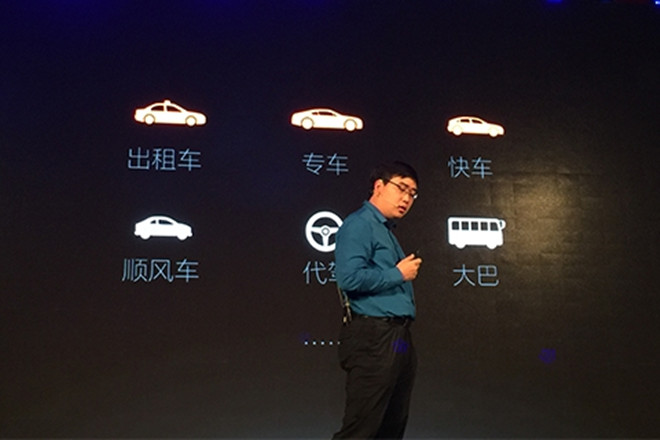In recent days, the circle of friends has been touched by the screen, and the CEO's annual meeting speech and a video reflecting the difficult growth of Didi have moved countless entrepreneurs to a mess. Indeed, cases like Didi are worthy of everyone’s warm applause. Of course, there are also many people in the industry who are puzzled about the screen-washing behavior of Didi: Drip is doing PR on such a large scale, is it creating momentum for financing? In fact, a few days ago (January 26), Didi just entered into a strategic cooperation with China Merchants Bank, which invested $200 million in Didi. Is the $3 billion in the last round of the dripping burned? According to public information, Didi confirmed the completion of $3 billion in financing in September 2015. 3 billion US dollars, part of which was spent on the withdrawal of the old shareholders, especially the quick team's realization; plus, the amount of financing has been misrepresented (see the degree of bragging of each company), it is expected that the actual use of Didi in 2015 The financing amount is about 2.5 billion US dollars. The $2.5 billion in cash reserves is certainly not too small. However, in the field of travel, the speed of burning is always faster. Then, how much did Didi lose in 2015? Didi's old rival is Uber , whose CEO Travis Karanic said at a strategic cooperation conference with HNA on January 11, 2016 that Didi will spend $70-80 million a week. It costs $4 billion a year to subsidize drivers. The most familiar with a company is often his competitors; but the average person often makes the situation of the competitors very bad. Under the huge competitive pressure of Didi, it is certain that the data disclosed by Karanick is "black" to a certain extent. Tao Ran, senior vice president of Drip's public relations department, counterattacked Karanick: because of the platform advantage of Didi, the single-subsidy subsidy of Didi is only 1/5 to 1/4 of Uber; Uber's financing materials are written very well. Clearly, Uber has an average subsidy of 40 yuan in China; if Uber can announce their losses in China, if it is less than 1.5 billion US dollars, Tao Ran is willing to be responsible for what he said. Tao Ran said Uber China lost more than $1.5 billion in 2015, but GMV (total revenue) is less than $800 million. It can also be speculated that Tao Ran also “blacked†Uber China to a certain extent and beautified himself: because of the platform advantage of Didi, the single-subsidy subsidy of Didi is only 1/5 to 1/4 of Uber. To estimate the losses of Didi in 2015 according to various situations: 1) It is completely casual to speculate that Uber CEO Travis Karanic said that it will cost $4 billion to subsidize drivers in one year, according to Kalannik ’s 50%, in 2015 It cost about $2 billion. 2) Assume that Uber China’s loss in 2015 was $1.5 billion. The subsidy for Didi is smaller, but the amount is larger , and the same amount as Uber’s loss should not be excessive. 3) Didi announced that the total order amount in 2015 was 1.43 billion units, with an average subsidy of 10 yuan per unit (Tao Ran said that Uber subsidizes 40 yuan per order, and Didi is 1/4 of Uber), considering the subsidy for taxis. In 2015, the proportion of taxis accounted for 32.5% (according to the data disclosed by Liu Qing, president of Liu Di in September 2015: an average of 3 million taxis per day, about 4 million passengers and express trains, downwind The peak value of the car is 2.23 million times...), then the loss of the drop is: 1.43 billion x 67.5% x 10 = 9.65 billion. Didi has subsidized about 10 billion yuan in 2015, and this figure should be more objective. Then, if you burn so much money, will the drops not hold? First of all, there will be a lot of deposit funds in the drop, according to the data mentioned in the CEO's letter to the shareholders: Didi's 2015 revenue is expected to be 12 billion US dollars (Note: This should refer to GMV). In this way, in 2015, the flow of water (GMV) is 70 billion yuan, assuming that the driver withdraws cash in 15 days (in fact, some drivers will pick up the cash on a weekly basis, some will withdraw cash in a month, take a median value), and the platform will be long-term. The deposit funds are also 3 billion yuan. In addition, the special car and express business of Didi began to be plundered in the first half of 2015, and the proportion of rakes was around 20%. In 2015, Didi's revenue (non-GMV) is expected to be around 3 billion yuan. Of course, there are currently more than 5,000 people at Didi, and the operating, technology, sales, and market costs are not small. The revenues that can be covered by non-subsidy are good. Loose Flange,Type 02 Flange,En1092 Loose Flange,Type02 Loose Flange Hebei Welkin Pipe Fitting Manufacturing Co., Ltd , https://www.welkinpipeline.com
EN flange is a flange system from England, which have flange type including TYPE1(Plate Flanges); TYPE2(Losses Plate Flanges); TYPE5(Blank Flanges); TYPE11(Weld-neck Flanges); TYPE12(Hubbed Slip-on Flanges For Welding); TYPE13(Hubbed Threaded Flanges)etc., pressure grade have PN2.5 PN6 PN10 PN16 PN25 PN40 PN63 PN100, Size from 1/2" NB TO 48"NB